By Alméras, Gaëlle, Warriner, David
Super Space Weekend by Gaëlle Alméras is a vibrant non-fiction graphic novel that blends astronomy education with playful storytelling, perfect for middle-grade readers aged 8–12. The book follows three curious friends—Squeak, a squirrel, Orni, a bird, and Castor, a beaver—as they camp in a whimsical treehouse observatory to explore the cosmos. Over their weekend adventure, they dive into topics like the solar system, star navigation, and planetary orbits, using hands-on experiments and lively discussions. Alméras balances humor with scientific rigor, embedding expert-vetted facts into the characters’ lighthearted banter. The trio’s dynamic—Squeak’s enthusiasm, Orni’s skepticism, and Castor’s methodical nature—creates relatable scenarios that mirror classroom interactions, making complex concepts like gravity or light-years feel approachable without oversimplification. Alméras’ comic-style illustrations are the backbone of this book’s accessibility. Detailed diagrams of constellations or planetary orbits are woven into the narrative, offering visual learners clear reference points—for instance, a spread comparing Earth’s size to other planets uses playful visuals of the characters “measuring” planets with a giant ruler. The text employs short, direct sentences and avoids dense paragraphs, allowing readers to absorb information at their own pace. Vocabulary is intentionally simple, with terms like “asteroid” or “light-year” introduced through character dialogue and contextual visuals, reducing the cognitive load for language learners. While idiomatic expressions are minimal, the friends’ relatable humor (“Is Pluto still a planet? Asking for a friend!”) keeps engagement high. Though the book hasn’t yet garnered major awards, its strength lies in its design: it mirrors how educators scaffold science lessons, using visuals and humor to demystify abstract ideas. For classrooms seeking to spark curiosity in reluctant readers or support STEM vocabulary acquisition, Super Space Weekend is a practical tool—it’s the kind of book a student might pick up for the jokes but finish with a newfound grasp of why stars twinkle or how tides work.
